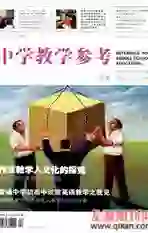大家别挤,排排队
2009-09-01郝丽华
郝丽华
一般情况下,多个形容词修饰同一个名词时,其顺序为:限定词→数词→描绘词(大小、长短、形状、新旧、颜色)→出处→材料性质、类别→名词。如:
a small round table
a tall gray building
a dirty old brown shirt
a famous German medical school
an expensive Japanese sports car
典型例题:
1.Tony is going camping with boys.
A.little two other
B.two little other
C.two other little
D.1ittle other two
答案:C。由“限定词→数词→描绘词(大小、长短,形状、新旧、颜色)→出处→性质→名词”的公式可知应按数词、描绘词、性质的顺序,只有C符合答案。
2.One day they crossed the bridge behind the palace.
A.old Chinese stone
B. Chinese old stone
C.old stone Chinese
D.Chinese stone old
答案:A。几个形容词修饰一个名词,它们的排列顺序是:年龄、新旧→来源→质地→名词。
3. —How was your recent visit to Qingdao?
—It was great.We visited some friends, and spent the days at the seaside.
A.few last sunny
B.last few sunny
C.last sunny few
D.few sunny last
答案:B。本题考查多个形容词的排序问题。一般与被修饰的名词关系密切的形容词靠近名词。
如果几个形容词的重要性差不多,音节少的形容词在前,音节多的放在后,在不能确定时,可参照以下顺序:
限定词+数量词(序数词在前,基数词在后)+性状形容词+大小、长短、高低等形体+新旧+颜色+国籍+材料+名词,如:
Those+three+beautiful+large+squar+old+brown+
wood+tables.
(责编 黄 晓 周侯辰)
